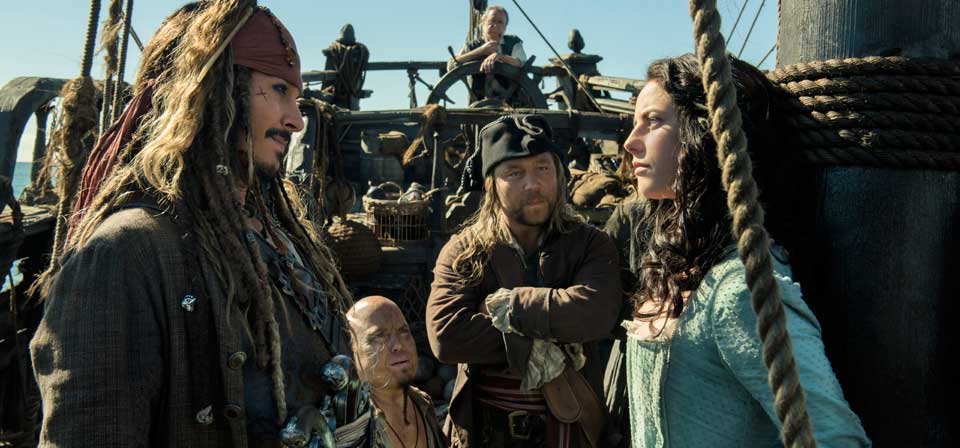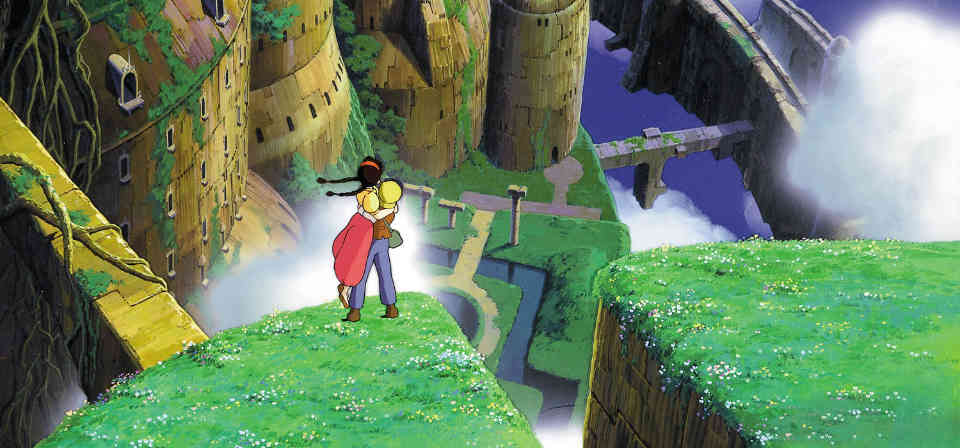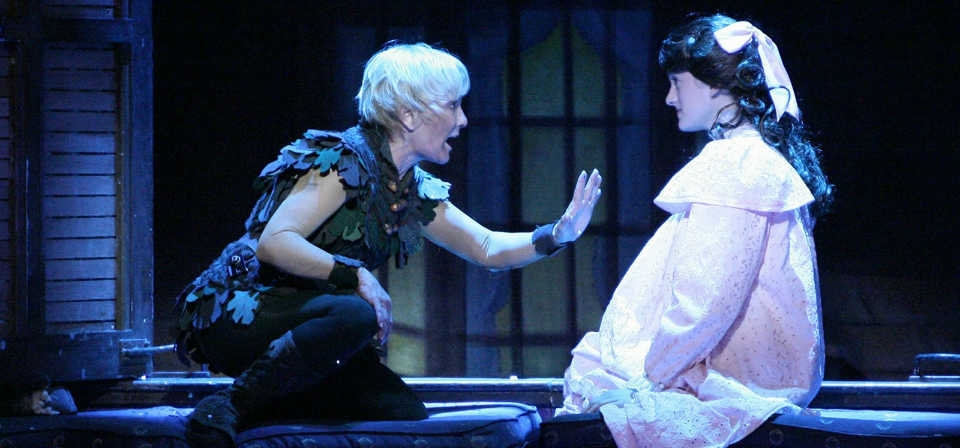Tags :: Piratical

Pirates of the Caribbean: Dead Men Tell No Tales (2017)
Even skeptics of the franchise must admit, I think, that the Pirates of the Caribbean films have generally aimed higher and been smarter than might have been expected.
Ice Age: Continental Drift (2012)
Ice Age: Continental Drift is more like a Happy Meal than a movie. It’s another serving of exactly the same product that millions of families have been served before and will come back to again and again. Its brand-name familiarity and reassuring sameness are its stock in trade. Nothing is different except for the toys; last time it was dinosaurs, this time it’s pirates. It’s more resolutely like the three previous Ice Age movies than they are like themselves.
The Pirates! Band of Misfits / In an Adventure with Scientists! (2012)
An Aardman film is always an exercise in absurdity, but The Pirates, directed by Peter Lord (Chicken Run) and Jeff Newitt, is possibly their silliest ever. This is the kind of film in which people say things like “Blood Island! So called because …it is the exact shape of some blood!” And: “You can’t always say Arrrrr! at the end of a sentence and think that makes everything all right.” And: “London town: the most romantic city in the world.” (Followed by: “London smells like Grandma!”) Those crazy Brits!
Pirates of the Caribbean: On Stranger Tides (2011)
Was Catholic novelist Tim Powers’ 1987 historical fantasy-adventure novel On Stranger Tides in some way the inspiration, or an inspiration, not only for this fourth Pirates of the Caribbean flick, but for the whole franchise?
Porco Rosso (1992)
Seaplanes combine Miyazaki’s twin gravity-defying loves of water and sky, flying and floating, as well as his affinity for vintage technology — and the movie’s haphazard, kitchen-sink style suggests that the director just wanted to kick back and have fun with this one. There are aerial dogfights, star-crossed romance, gorgeous scenery, a hat tip Fleischer-style vintage animation, a rip-roaring escape sequence set in Milan, a nightclub where enemies sit at adjacent tables like Rick’s in Casablanca and the proprietress sings torch songs, and a showdown between the titular hero and an American antagonist that plays like the ultimate Humphrey Bogart / Errol Flynn smackdown that never was.

Laputa: Castle in the Sky (1986)
From the Leonardo-like engineering illustrations of the opening credit sequence to the hauntingly surreal final image on the edge of space, Hayao Miyazaki’s Laputa, or Castle in the Sky as it’s been dubbed for English-speaking audiences, displays the filmmaker’s visionary brilliance as a shaper of worlds as compellingly as any film he has made.
Pirates of the Caribbean: At World’s End (2007)
If Dead Man’s Chest was inspiration gone amok, At World’s End is more — much, much, much more — of the same, only without the inspiration. In every respect it outdoes its predecessor, except in charm, entertainment and fun. Add Pirates of the Caribbean to the roster of franchises foundering on the rocks the third time out.
Pirates of the Caribbean: Dead Man’s Chest (2006)
The Raiders comparison is more apt here than in the original, where the swordplay and such was more energetic and well-done than inspired. The sequel takes the slapstick swashbuckling to a completely new level, evoking the ingenuity and physical comedy of a Buster Keaton or Jackie Chan set piece, crossed with the Rube Goldberg logic of a Chuck Jones cartoon.
Swiss Family Robinson (1960)
The film simplifies the original story in many ways, reducing the book’s four sons to three and the half-dozen or so homesteads and plantations the Robinsons build to the one famous treehouse. Wyss’s fantastical menagerie, which included penguins, kangaroos, flamingos, lions, and boa constrictors living side by side, is only slightly restrained by a century and a half of scientific advancement, and the book’s strong element of religious devotion and moral discipline is largely reduced in the film to a moment of silent prayer on the beach.
The Princess Bride (1987)
Rob Reiner’s great cult classic The Princess Bride is one of those rare satiric gems, like The Court Jester and Galaxy Quest, that doesn’t just send up a genre, but honors it at the same time, giving us the excitement and pleasure of the real thing as well as the laughs of a comedy.
The SpongeBob SquarePants Movie (2004)
(Written by Jimmy Akin) SpongeBob SquarePants (Tom Kenny) is a sponge who wears square pants and who lives in a town on the ocean floor called Bikini Bottom (get it?). He’s also an ace crackerjack fry cook in a greasy spoon called the Krusty Krab.
Peter Pan (1953)
For millions of children and adults, Disney’s Peter Pan is THE Peter Pan, as well as a defining moment in Disney animation, giving the studio its logo mascot, Tinker Bell.

Peter Pan (2000)
It may seem heresy to baby boomers with fond memories of Mary Martin singing and flying on NBC, but this beautifully produced A&E restaging of the musical, starring gymnast-turned-actress Cathy Rigby, eclipses the beloved 1960 Martin kinescope in almost every way.
Peter Pan (2003)
One of the functions of fairy tales is to reflect in an imaginative way truths that, were they presented literally, children might not be ready for, but which they can on some level apprehend and assimilate in this form, and be in some way more prepared emotionally for life. Fairy tales help children grasp what life expects of them, what dangers, adversities, and opportunities they will face. From them children can begin to learn the prudence to avoid the dangers, the fortitude to face the adversities, and the enterprise to seize the opportunities.
Peter Pan (1924)
Continuing a stage convention that would extend to subsequent film versions, Pan is played by a petite woman, teenaged Betty Bronson (hand-picked by Barrie himself), who brings tomboyish energy and dash to the role. Ernest Torrence sneers with foppish malevolence as Captain Hook, and Mary Brian makes a charming Wendy. The stage flying effects work just as well onscreen, and George Ali reprises his delightful costumed animal performances from the stage as Nana and the crocodile.
Sinbad: Legend of the Seven Seas (2003)
With its swashbuckling action and blend of traditional and 3D computer animation, Sinbad most resembles Disney’s Treasure Planet — yet for once DreamWorks handily outdoes its archrival, with bravura action set pieces, a surprisingly complex romantic triangle, and an even more remarkably thoughtful exploration of moral issues and character.
Return to Never Land (2002)
Return to Never Land is Peter Pan Lite, if I can say that without conjuring images of low-fat peanut butter.
Pirates of the Caribbean: The Curse of the Black Pearl (2003)
The most remarkable thing about Pirates of the Caribbean: The Curse of the Black Pearl is neither Johnny Depp’s mesmerizing performance, nor ILM’s literally eye-popping skeletal ghost-ship crew, but the sheer fact that the movie works at all.
The Black Pirate (1926)
Fairbanks’s astonishing acrobatics remain dazzling today, and the climactic battle includes some great underwater footage of an aquatic assault on the pirates. This film includes Fairbanks’ most famous and widely copied stunt, riding down a sail on the edge of a knife; but my favorite is the scene in which he cuts loose the corner of a billowing sail and then holds on as the wind carries him up off the deck of the ship and high into the rigging.
Jonah: A VeggieTales Movie (2002)
(Review by Mark Shea) I know. It sounds uninspiring on paper, if you haven’t seen them. But — you gotta trust me on this — these guys are really funny, a sort of strange brew mixing Monty Python, MTV, your third grade Sunday School teacher and a tiny bit of Robin Williams — all with a G rating.
Treasure Planet (2002)
(Written by Jimmy Akin) Treasure Planet is Robert Louis Stevenson meets George Lucas. More specifically, it’s Treasure Island meets The Phantom Menace.
Recent
- Benoit Blanc goes to church: Mysteries and faith in Wake Up Dead Man
- Are there too many Jesus movies?
- Antidote to the digital revolution: Carlo Acutis: Roadmap to Reality
- “Not I, But God”: Interview with Carlo Acutis: Roadmap to Reality director Tim Moriarty
- Gunn’s Superman is silly and sincere, and that’s good. It could be smarter.
Home Video
Copyright © 2000– Steven D. Greydanus. All rights reserved.